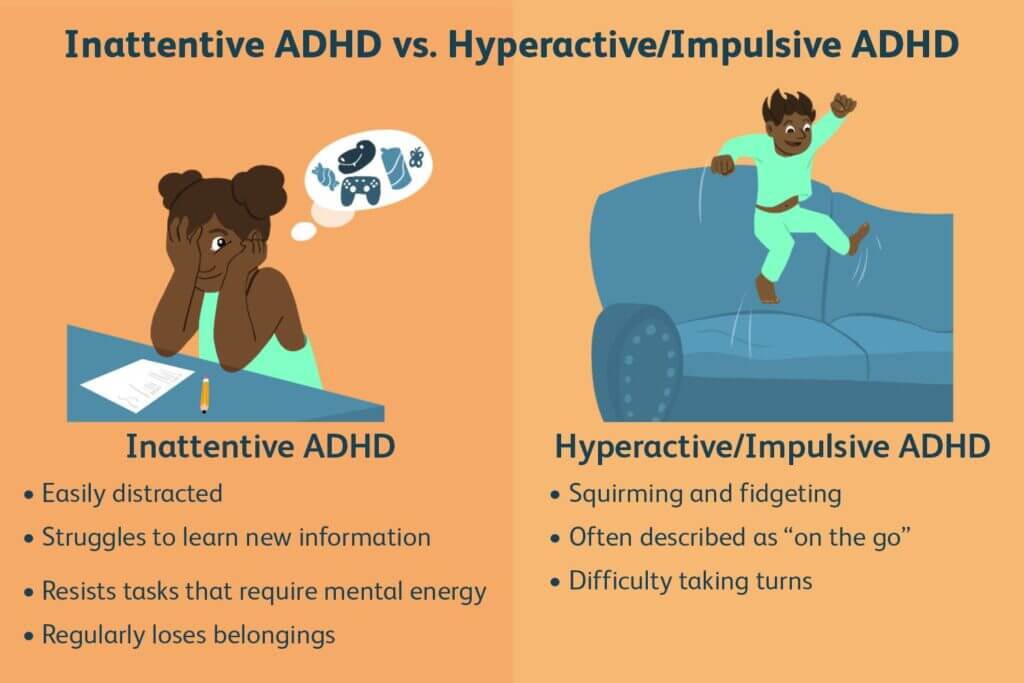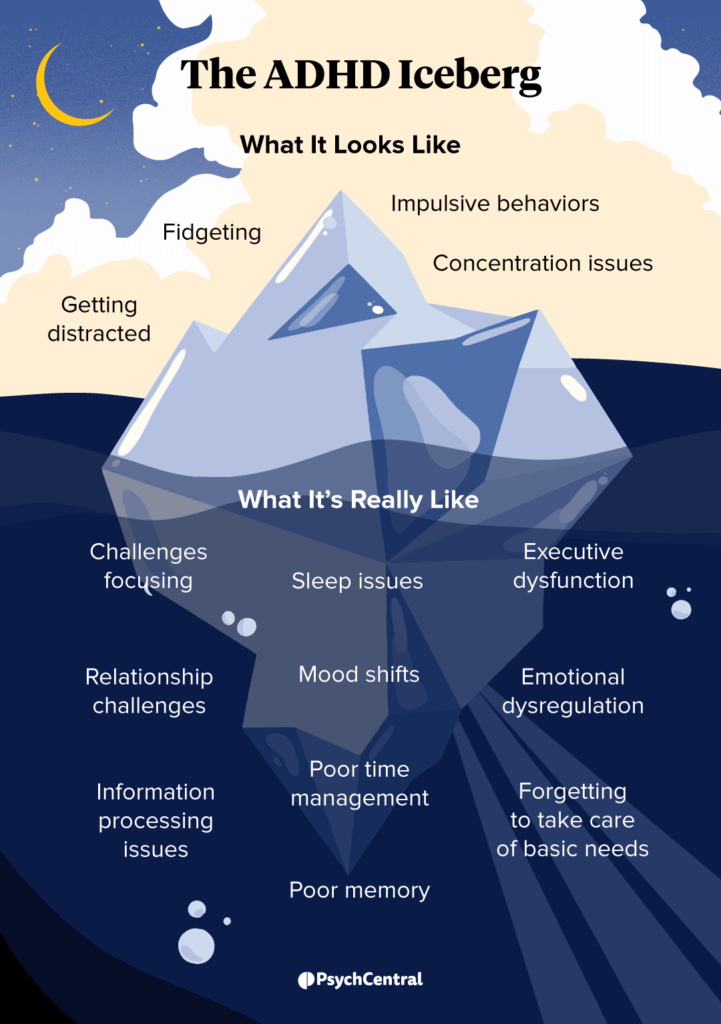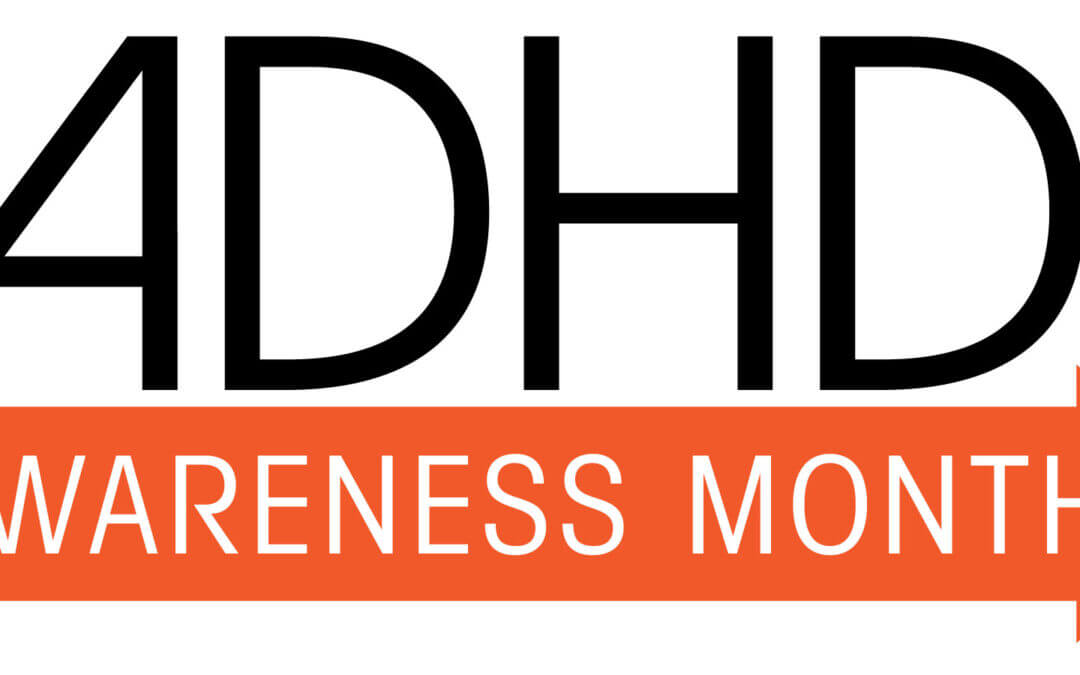Though Attention Deficit Hyperactivity Disorder (ADHD) can be difficult to diagnose, it’s estimated that over 6 million children in America have it. In this post, we’ll define ADHD; discuss why there is a month dedicated to making the public aware of the disorder and explore ways to seek help if you suspect your child or someone you love may suffer from it.
About ADHD
ADHD is a mental disorder that causes an inability to focus, trouble with organization and a difficulty with detail-oriented tasks. Though it mostly affects children, adults can also suffer from ADHD.
Though the cause and risk factors for ADHD are unknown, research suggests that there is a large genetic component involved. Other possible factors include premature delivery, low birth weight, alcohol and tobacco use during pregnancy, injuries to the brain and exposure to toxins at a young age or in utero.
ADHD Symptoms and Diagnosis
Because so many other issues such as sleep challenges, learning disabilities and anxiety can have similar symptoms to ADHD, the testing and diagnosis for it can be extensive. Once a parent or guardian suspects a child may have ADHD, the doctor will most likely meet with them to gather information about the child’s behavior. Often times, they’ll consider the volume and variety of inattention indicators, and how long they have displayed these behaviors, to reach a positive ADHD diagnosis. Some common indicators include:
- Doesn’t listen when spoken to directly.
- Has difficulty organizing tasks.
- Is easily distracted (even from activities they enjoy).
- Doesn’t have good attention to detail.
- Loses important items that relate to everyday activities, such as keys, eyeglasses, school supplies, etc.)
- Makes careless mistakes in schoolwork or household chores.
- Has trouble following through on commitments like homework.
- Can’t hold attention during activities.
- Is generally forgetful.
- Expresses discontent for or loses interest easily in long-term projects.
- Squirms in seat or fidgets.
- Talks excessively.
- Unable to play or participate in structured activities quietly.
- Interrupts or intrudes on others.
- Has difficulty waiting their turn in structured situations.

With adults, the symptoms may appear different and manifest in extreme restlessness to the exhaustion and exasperation of friends and family nearby.
ADHD Treatments
Treatments for ADHD vary based on the age of the individual and their specific needs. For very young children, parents and caretakers will usually be trained in behavior management; for older children, in addition to that, there may be medication introduced to lessen the severity of symptoms. Plus, for school age children, their teachers and coaches may be consulted to participate in a comprehensive approach that provides consistent direction for the child.
There are basic things parents can try at home that may help the child gain more control over their ADHD like solidifying a routine, limiting choices to prevent them from feeling overwhelmed and creating a goal and reward plan for good behavior.
About ADHD Awareness Month
The mission of ADHD Awareness Month states that they aim “to educate the public about ADHD by disseminating reliable information based on the evidence of science and peer-reviewed research.”
7 Facts:
- 1. ADHD is Real
Nearly every mainstream medical, psychological, and educational organization in the United States long ago concluded that Attention-Deficit/Hyperactivity Disorder (ADHD) is a real, brain-based medical disorder. These organizations also concluded that children and adults with ADHD benefit from appropriate treatment.
- ADHD is a Common, Non-Discriminatory Disorder
ADHD is a non-discriminatory disorder affecting people of every age, gender, IQ, religious and socio-economic background.
In 2011, the Centers for Disease Control and Prevention reported that the percentage of children in the United States who have ever been diagnosed with ADHD is now 9.5%. Boys are diagnosed two to three times as often as girls.
Among adults, the Harvard/NIMH National Comorbidity Survey Replication found 4.4% percent of adults, ages 18-44 in the United States, experience symptoms and some disability.
ADHD, AD/HD, and ADD all refer to the same disorder. The only difference is that some people have hyperactivity and some people don’t.

- Diagnosing ADHD is a Complex Process
In order for a diagnosis of ADHD to be considered, the person must exhibit a large number of symptoms, demonstrate significant problems with daily life in several major life areas (work, school, or friends), and have had the symptoms for a minimum of six months.
To complicate the diagnostic process, many of the symptoms look like extreme forms of normal behavior. Additionally, a number of other conditions resemble ADHD. Therefore, other possible causes of the symptoms must be taken into consideration before reaching a diagnosis of ADHD.
What makes ADHD different from other conditions is that the symptoms are excessive, pervasive, and persistent. That is, behaviors are more extreme, show up in multiple settings, and continue showing up throughout life.
No single test will confirm that a person has ADHD. Instead, diagnosticians rely on a variety of tools, the most important of which is information about the person and their behavior and environment. If the person meets all the criteria for ADHD, they will be diagnosed with the disorder.
- Other Mental Health Conditions Often Occur Along With ADHD
Up to 30% of children and 25-40% of adults with ADHD have a co-existing anxiety disorder. Experts claim that up to 70% of those with ADHD will be treated for depression at some point in their lives. Sleep disorders affect people with ADHD two to three times as often as those without it.
- ADHD is Not Benign
ADHD is not benign. Particularly when the ADHD is undiagnosed and untreated, ADHD contributes to:
- Problems succeeding in school and successfully graduating.
- Problems at work, lost productivity, and reduced earning power.
- Problems with relationships.
- More driving citations and accidents.
- Problems with overeating and obesity.
- Problems with the law.
According to Dr. Joseph Biederman, professor of psychiatry at Harvard Medical School, ADHD may be one of the costliest medical conditions in the United States: “Evaluating, diagnosing and treating this condition may not only improve the quality of life, but may save billions of dollars every year.”
- ADHD is Nobody’s FAULT
ADHD is NOT caused by moral failure, poor parenting, family problems, poor teachers or schools, too much TV, food allergies, or excess sugar. Instead, research shows that ADHD is both highly genetic (with the majority of ADHD cases having a genetic component), and a brain-based disorder (with the symptoms of ADHD linked to many specific brain areas).
The factors that appear to increase a child’s likelihood of having the disorder include gender, family history, prenatal risks, environmental toxins, and physical differences in the brain.
- ADHD Treatment is Multi-Faceted
Currently, available treatments focus on reducing the symptoms of ADHD and improving functioning. Treatments include medication, various types of psychotherapy, behavioral interventions, education or training, and educational support. Usually a person with ADHD receives a combination of treatments.
Contact a Medical Professional
If you or someone you love suffers from ADHD, or you suspect you or they may have it, our team at New Roads Behavioral Health can help. Reach out to our team today to get started on your healing journey.

